INSIDE OUTSIDE EUROPE
One stage design, four plays, four theatres
Part of European Capital of Culture programme
Theaters of Freiberg, Chemnitz, Plauen, Annaberg-Buchholz
2025
The four new plays, commissioned for the European Capital of Culture festival in Chemnitz, tell of clowns and laughter in Europe, of entanglements with German fascism, of homeland and of migrant experiences. A unified stage is a barrier between ,fortress Europe’ and the outside world that gets built, broken and ultimately dismantled during the performance.
![]()
One stage design, four plays, four theatres
Part of European Capital of Culture programme
Theaters of Freiberg, Chemnitz, Plauen, Annaberg-Buchholz
2025
The four new plays, commissioned for the European Capital of Culture festival in Chemnitz, tell of clowns and laughter in Europe, of entanglements with German fascism, of homeland and of migrant experiences. A unified stage is a barrier between ,fortress Europe’ and the outside world that gets built, broken and ultimately dismantled during the performance.
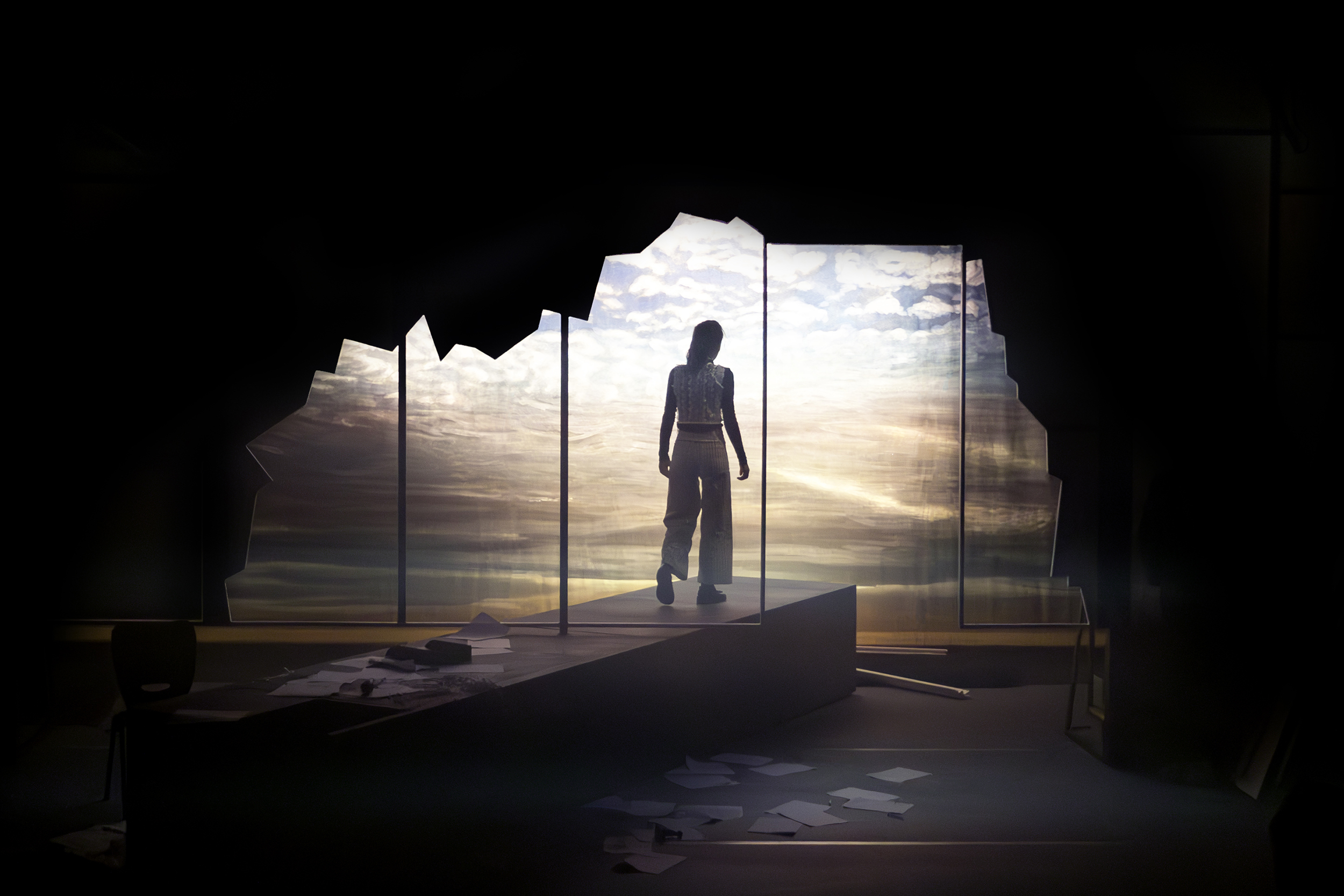


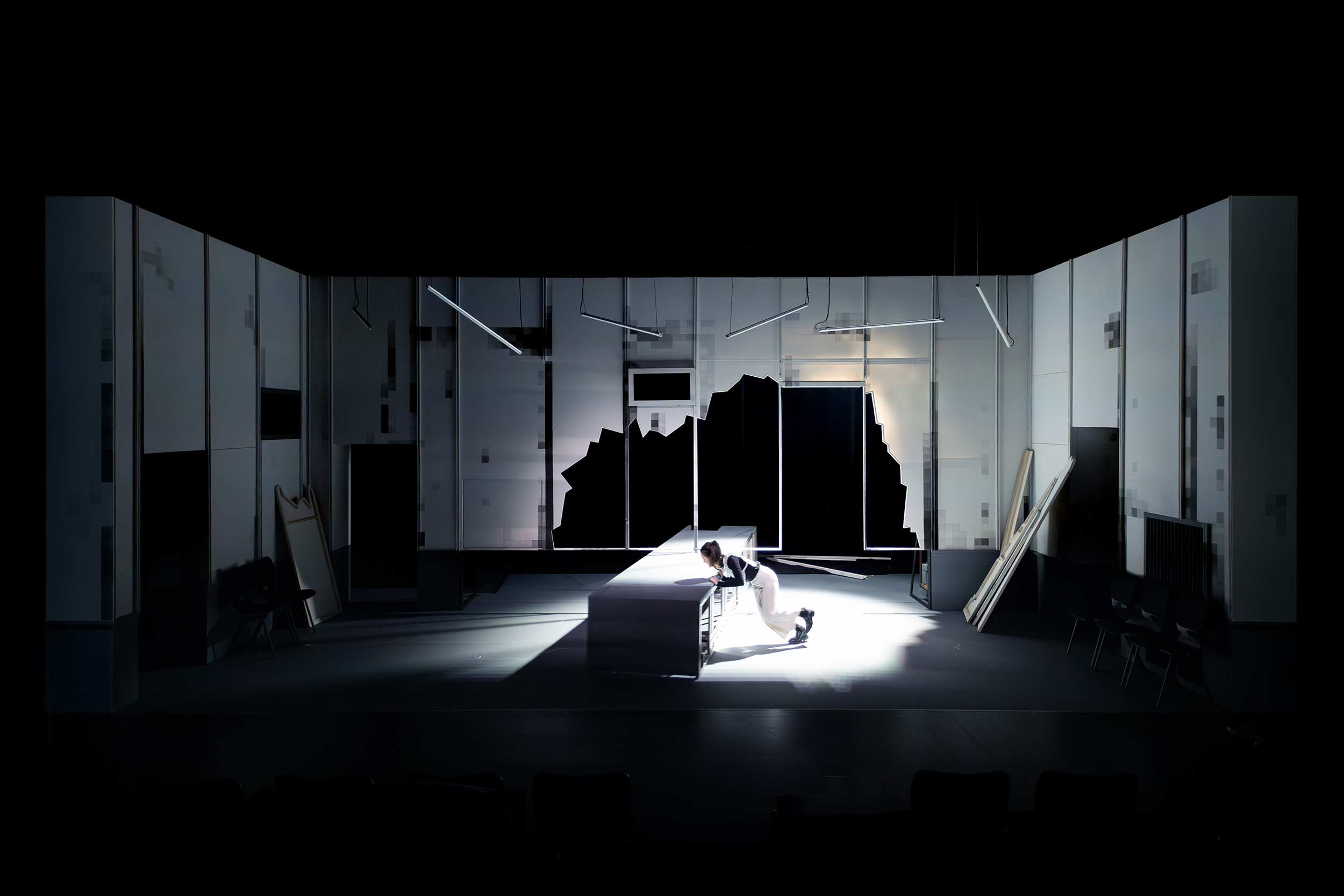




Directed by Petra Ratiu, Tamó Gvenetadze, Karen Breece and Jasmin Zamani
Dramaturgy and Idea of Gundula Hoffmann, René R. Schmidt, Luise Curtius, Asia Schreiter
Technical Direction and Production Management by Norbert Richter and Sebastian Blei
Designed in collaboration with Tina Hübner
Full ensemble and technical production credits available on Theatre Chemnitz website
BÜHNENWELTEN
An immersive exhibition of stage models
and accompanying catalogue design
Kleist-Museum, Frankfurt (Oder)
2022
Over 40 stage models from seven decades of theater history can be found in the collection of the Kleist-Museum. Stage models are presented in a variety of environments that focus on their role as works of art, archival materials and designers’ tools. History of stage models is shown throughout the stations, as well as various aspects of Heinrich von Kleist's reception in the theater. The exhibition is enriched by additional materials from the museum collection, which are presented part analogue, part digitally through a specially created AR app.
An immersive exhibition of stage models
and accompanying catalogue design
Kleist-Museum, Frankfurt (Oder)
2022
Over 40 stage models from seven decades of theater history can be found in the collection of the Kleist-Museum. Stage models are presented in a variety of environments that focus on their role as works of art, archival materials and designers’ tools. History of stage models is shown throughout the stations, as well as various aspects of Heinrich von Kleist's reception in the theater. The exhibition is enriched by additional materials from the museum collection, which are presented part analogue, part digitally through a specially created AR app.
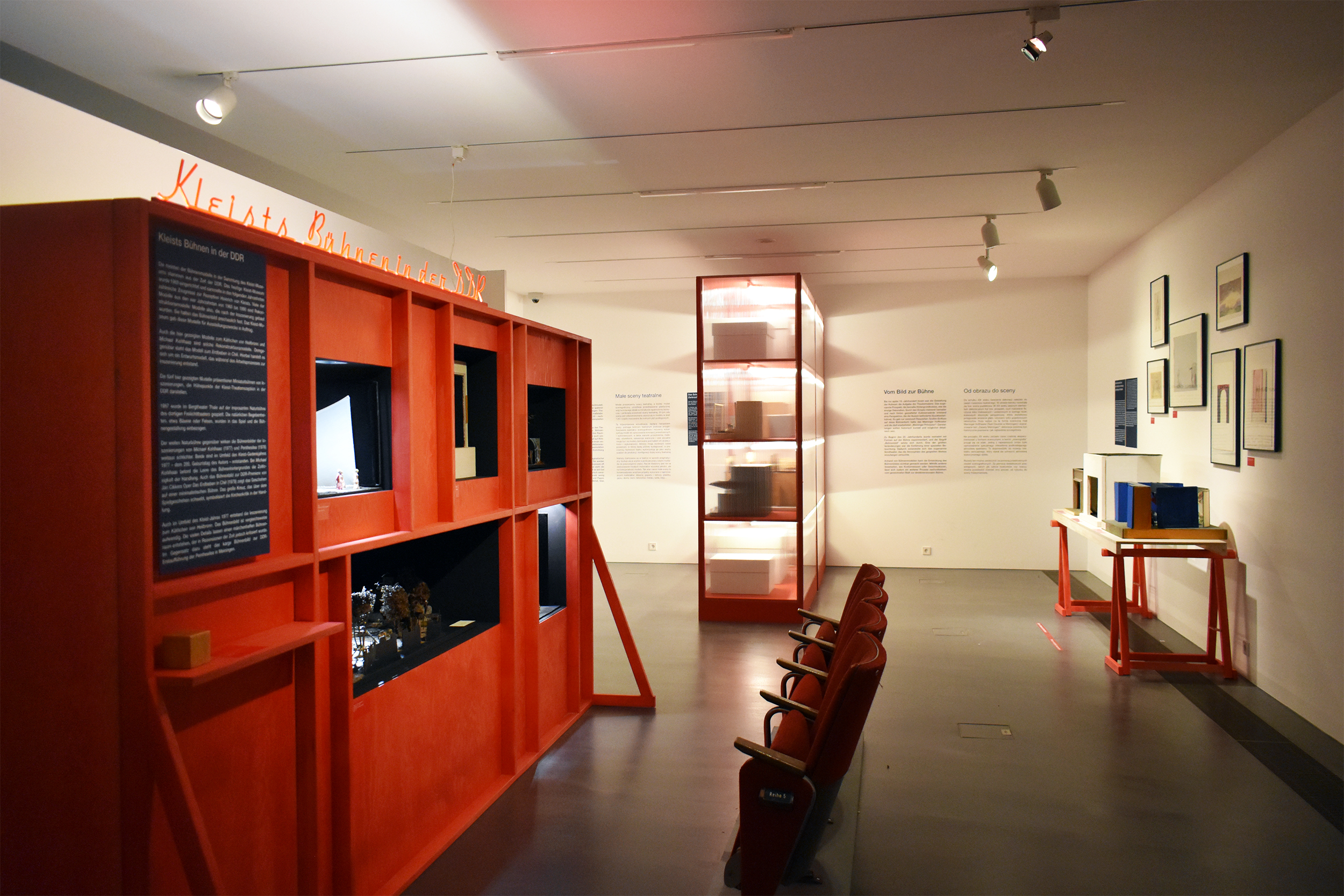
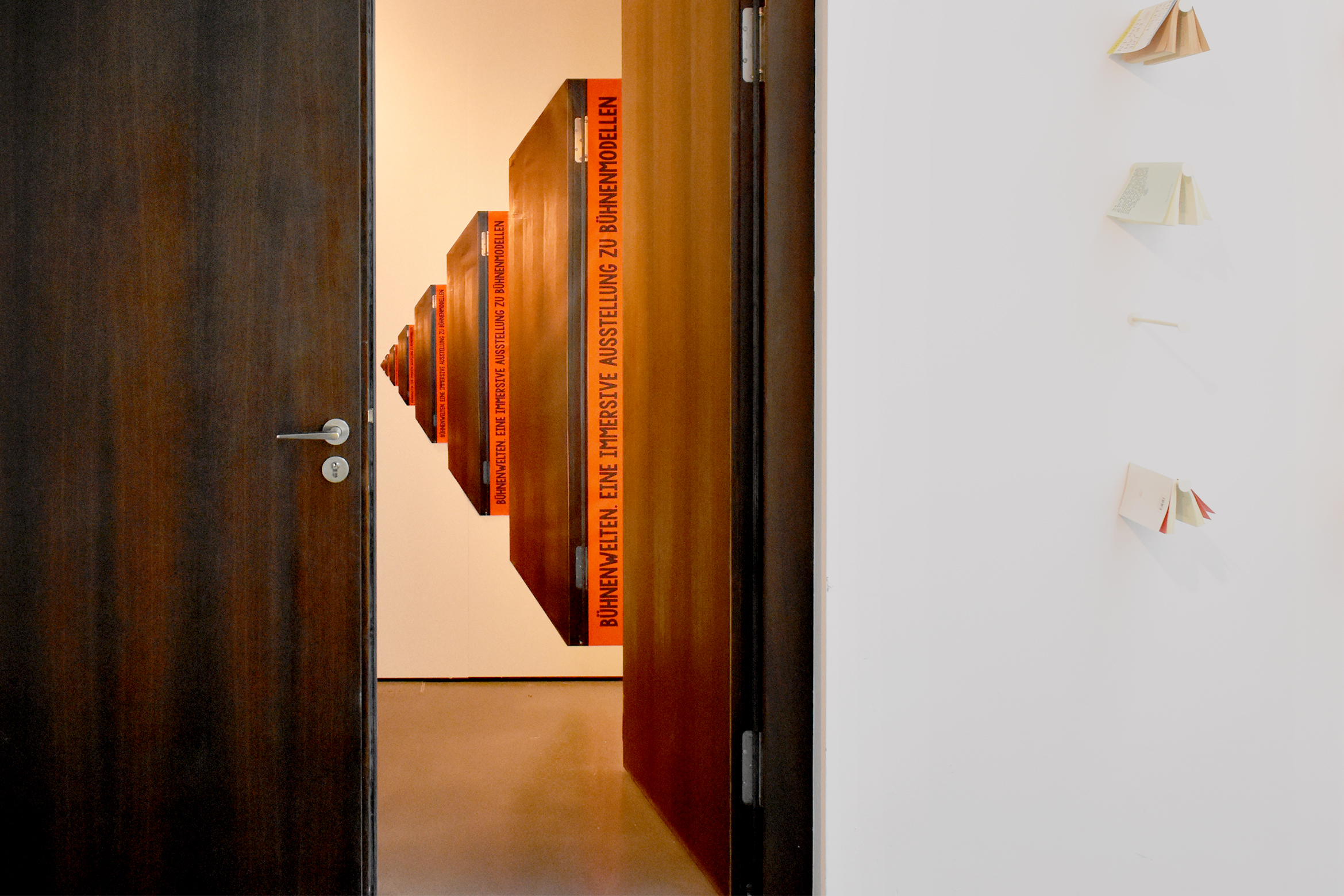
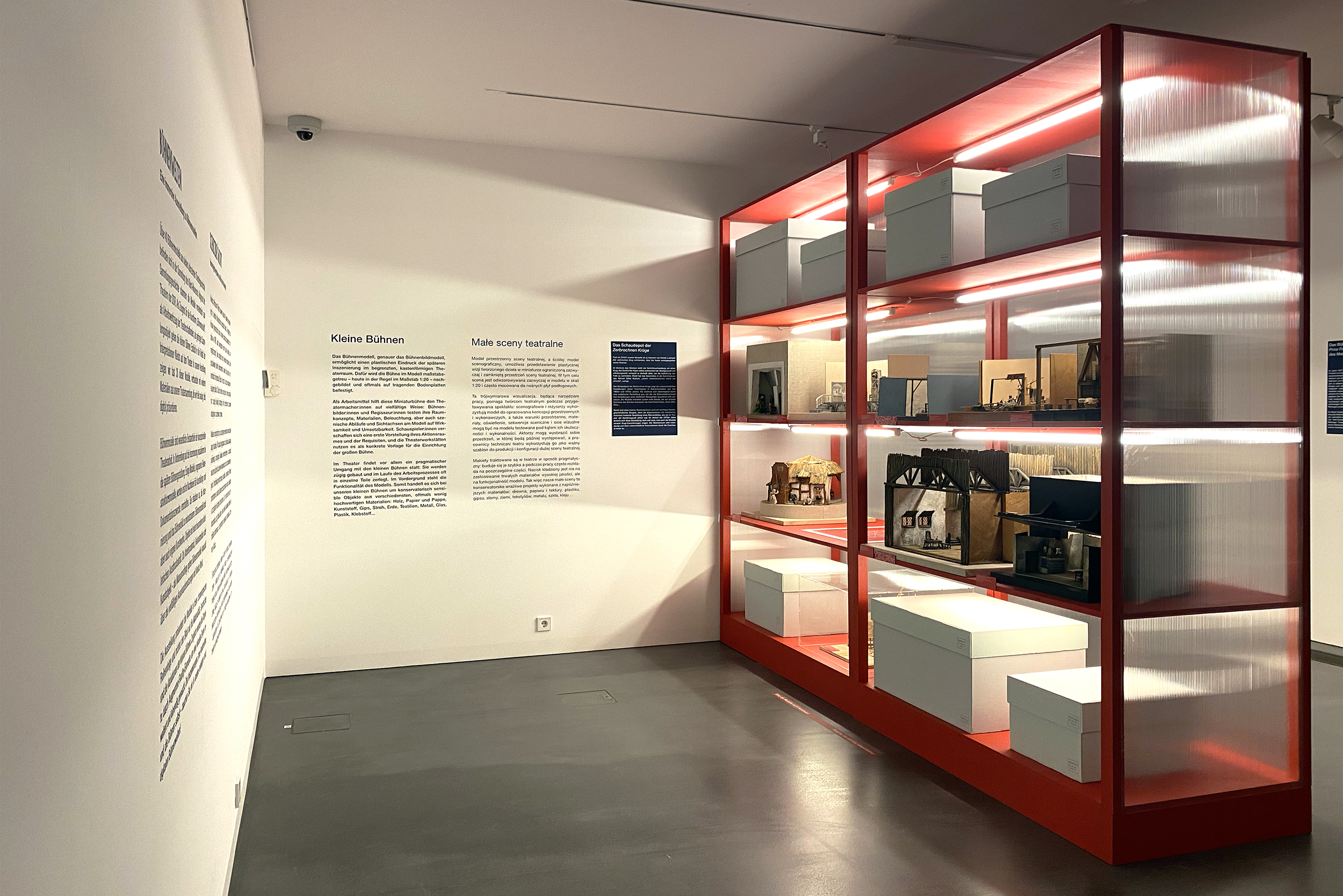
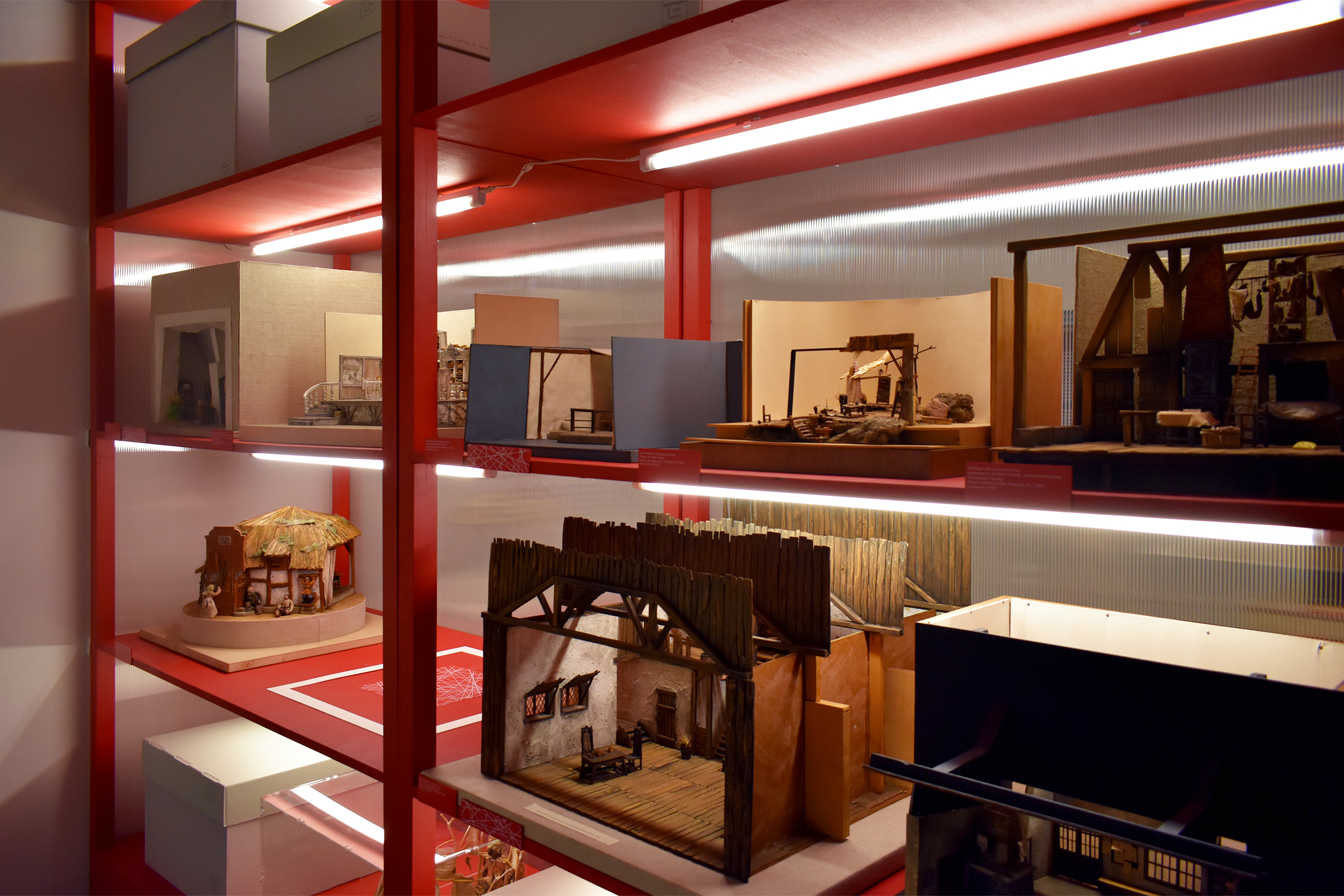
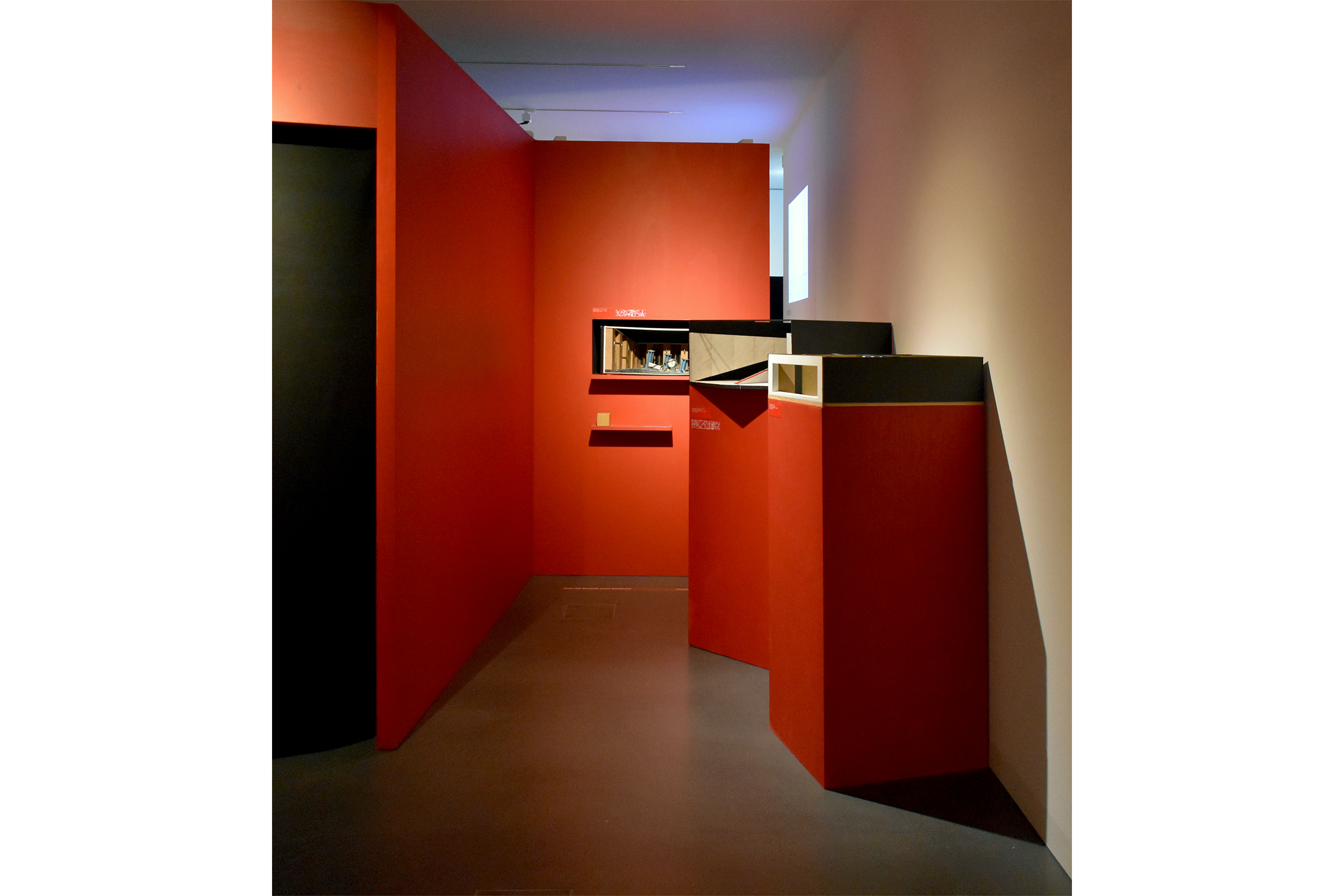
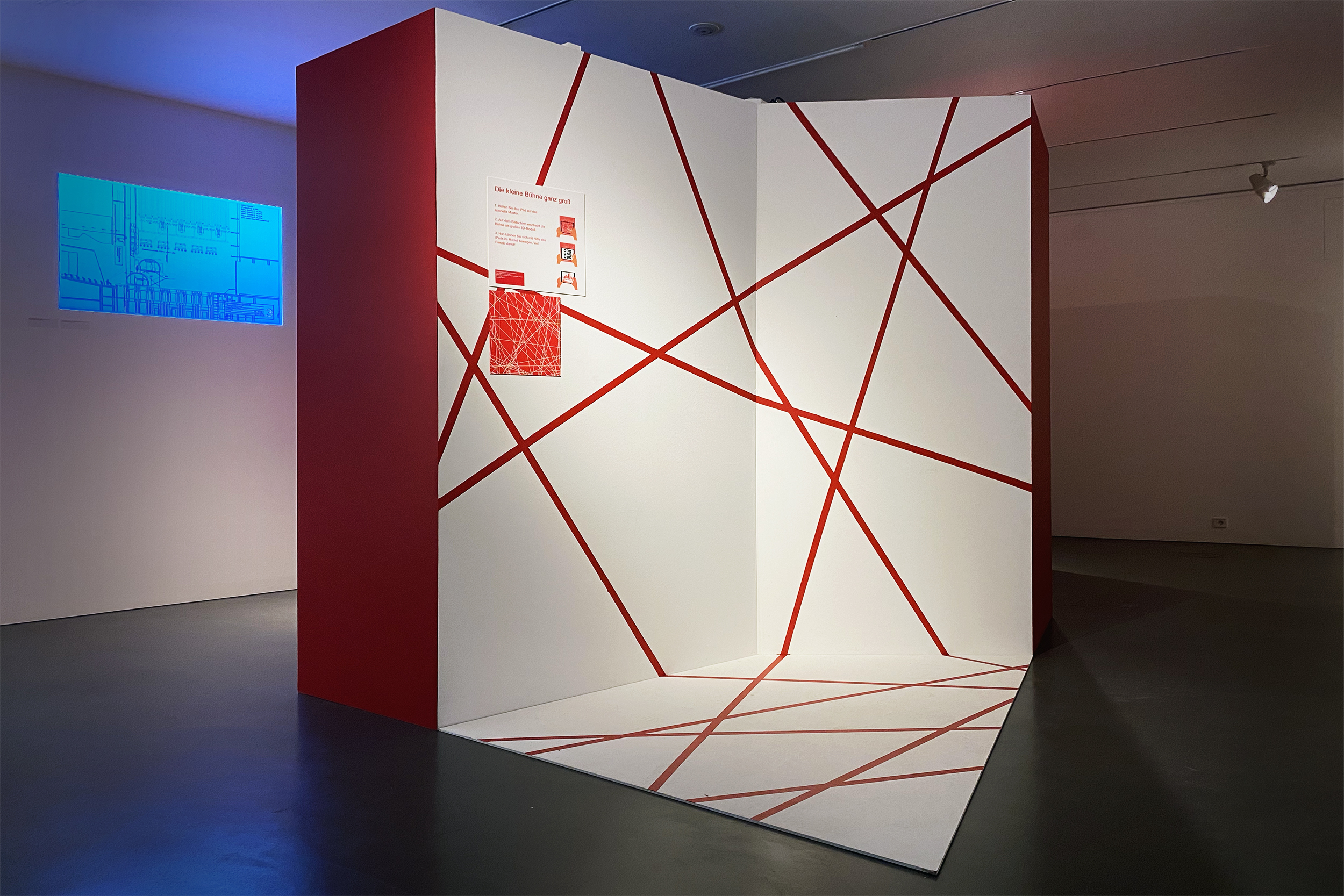 Curated by Viviane Meierdreeß and Milena Rolka
Curated by Viviane Meierdreeß and Milena RolkaAssociate Design by Shel Yan
Polish texts by Paulina Jonczynski
AR Design by Research group INKA, HTW Berlin
Furniture and Montage by Backstage Jonscher GmbH
Technical Direction by Frank Käubler
With generous support of Land Brandenburg Ministry of Science, Research and Culture
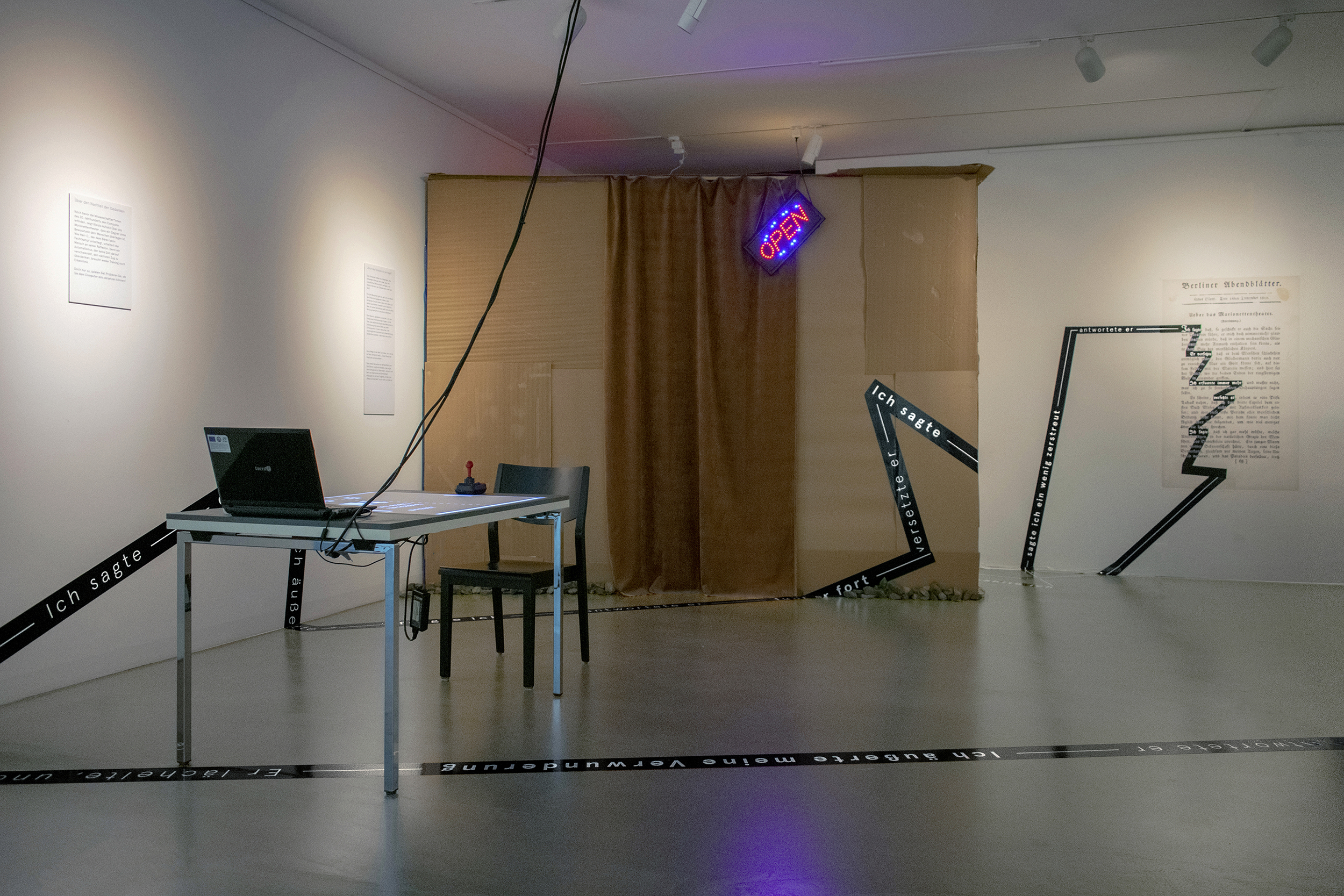
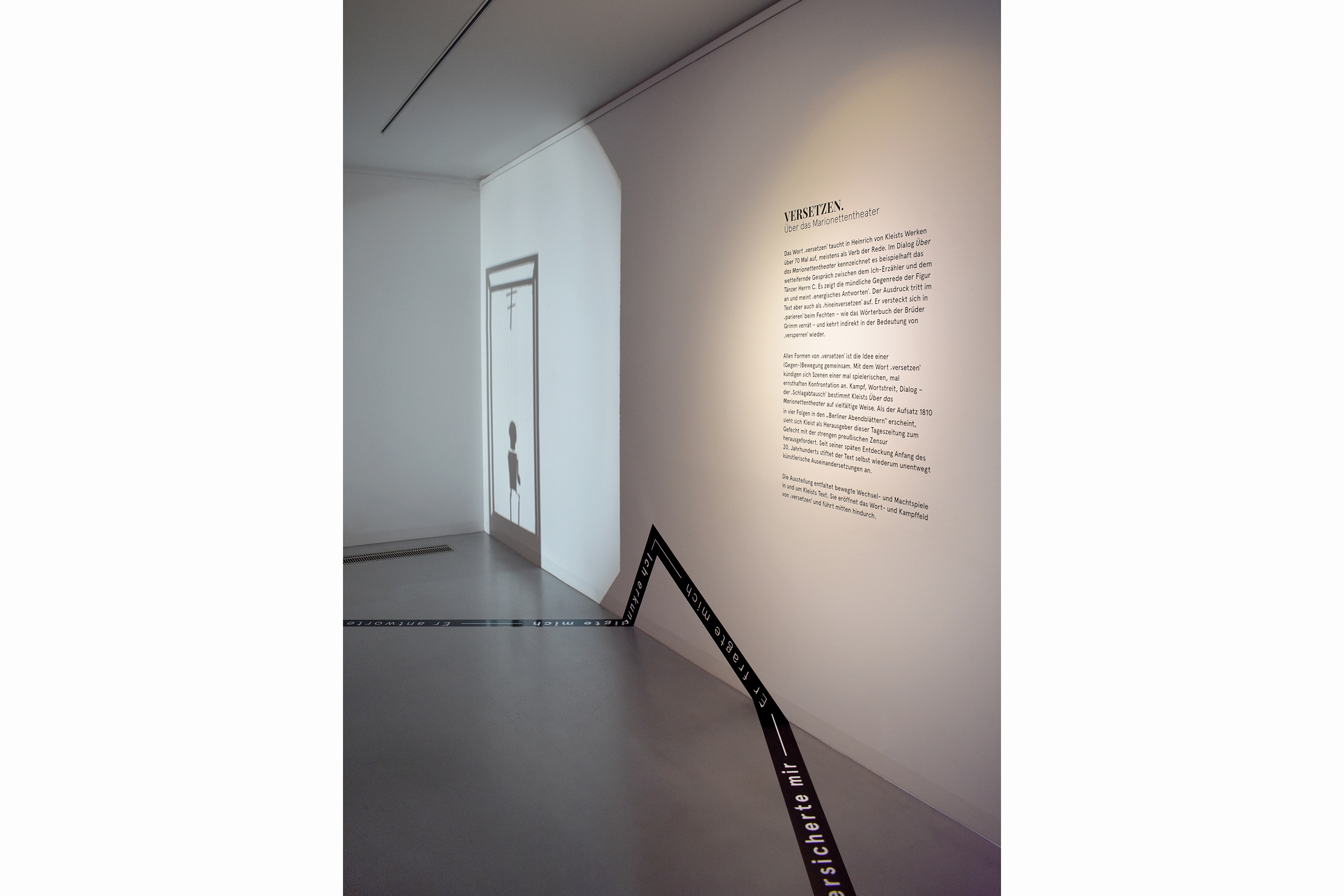
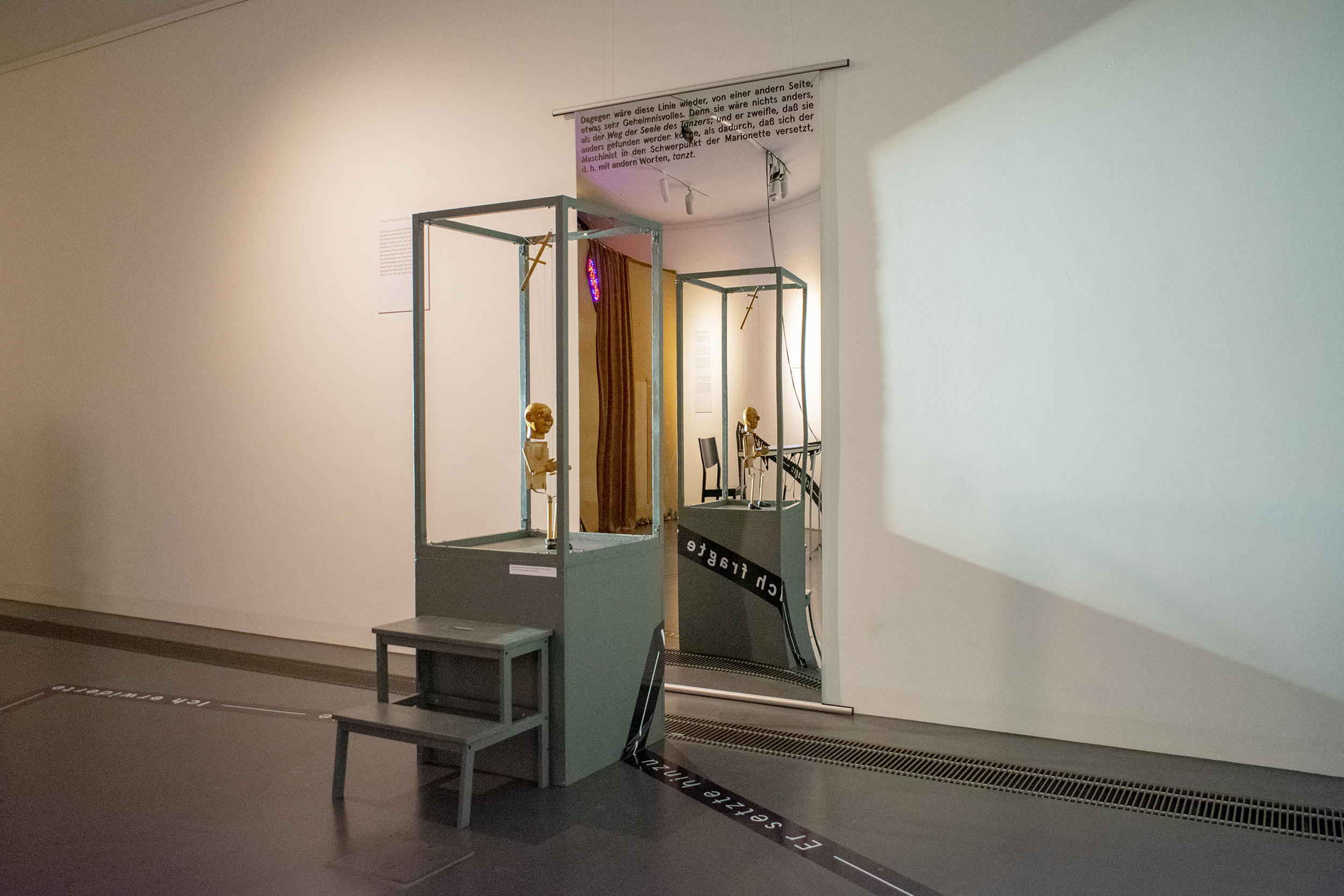
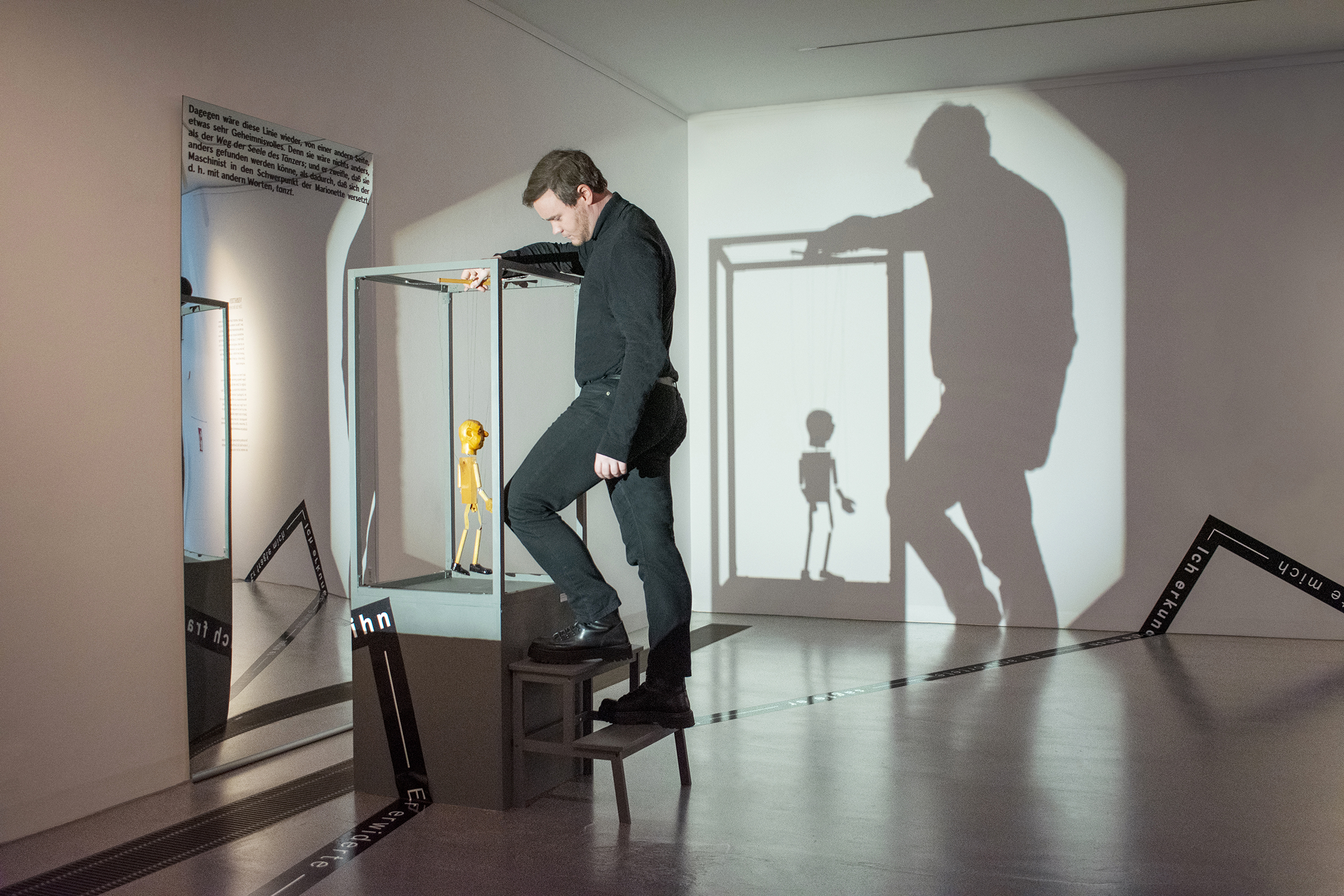
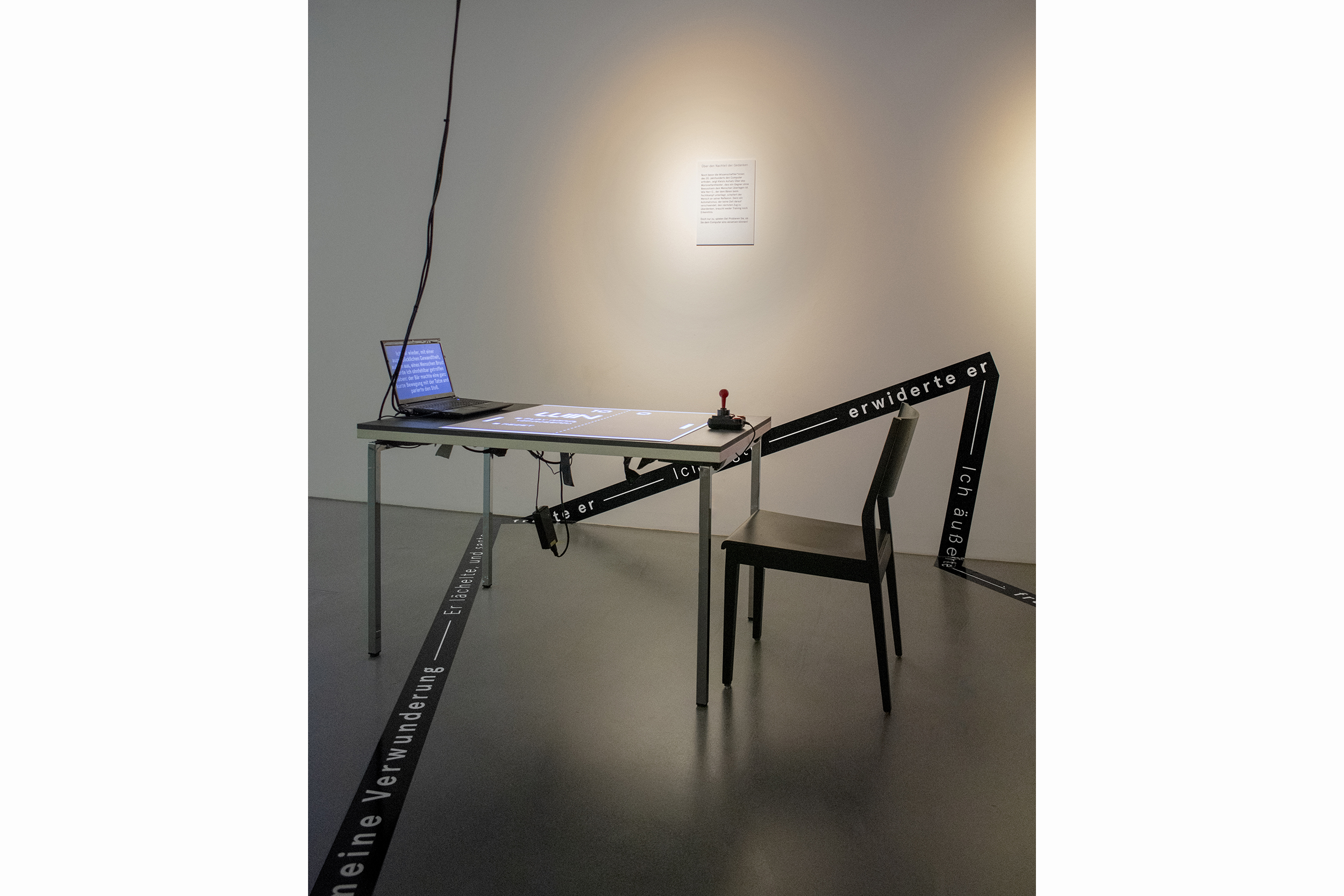


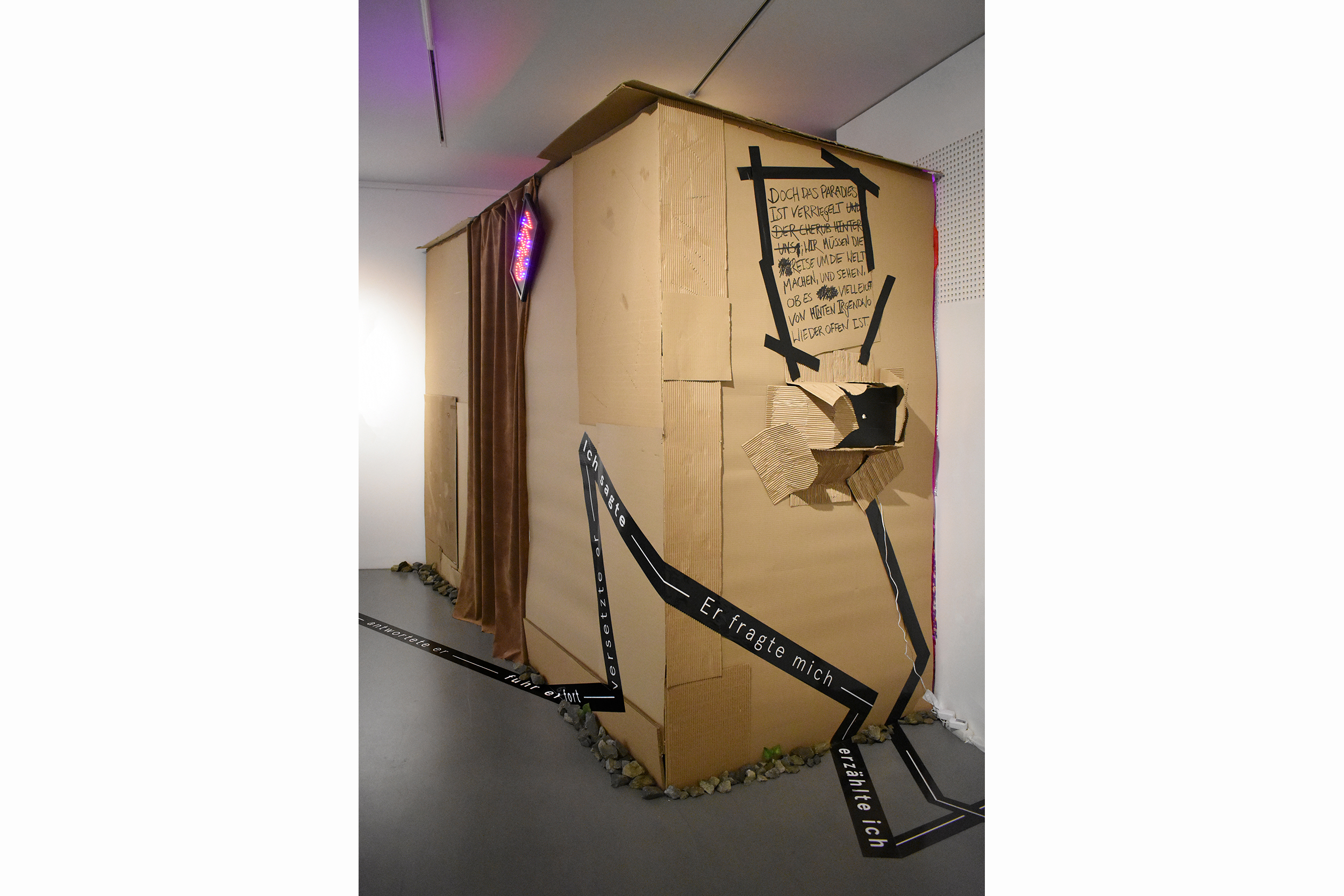
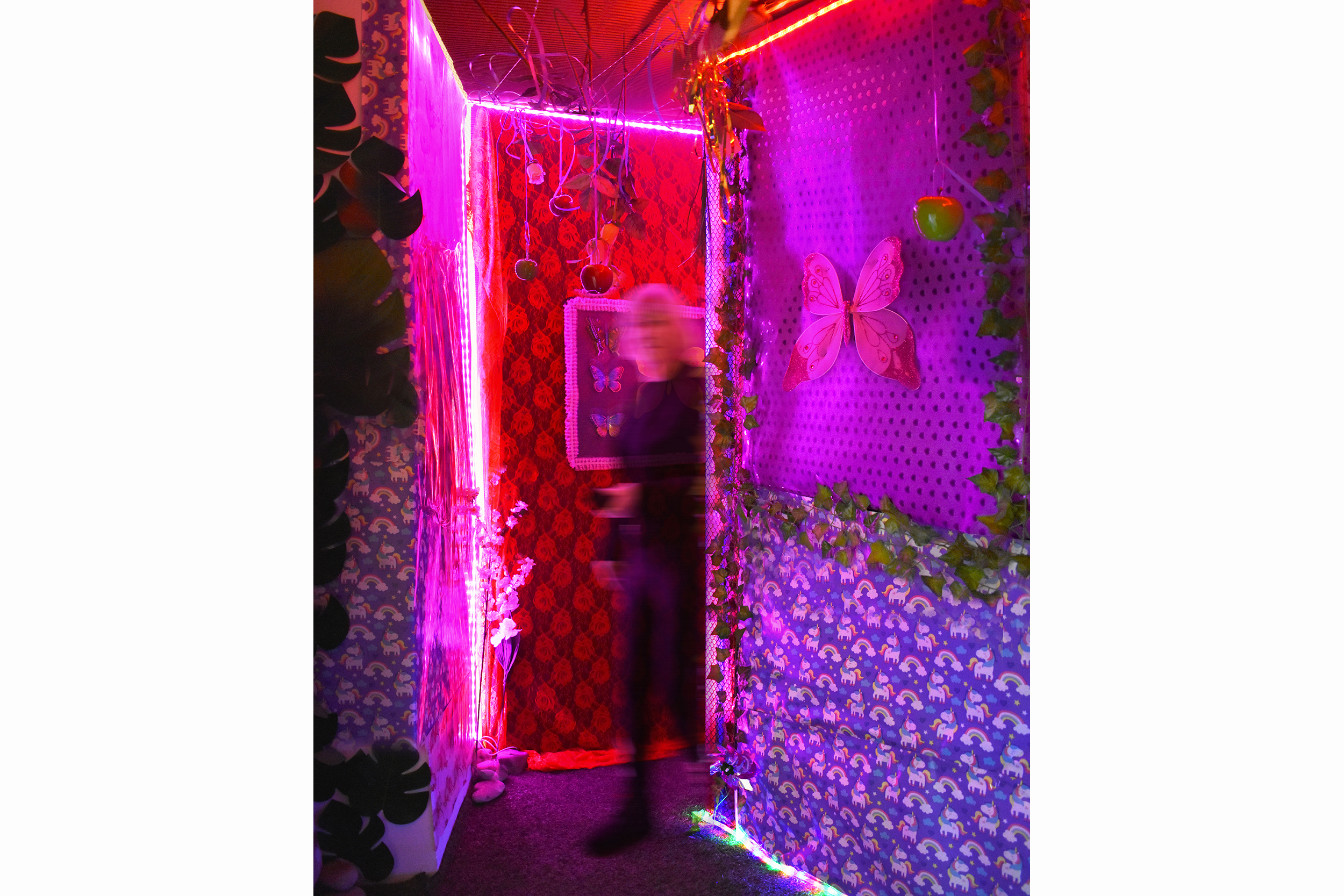
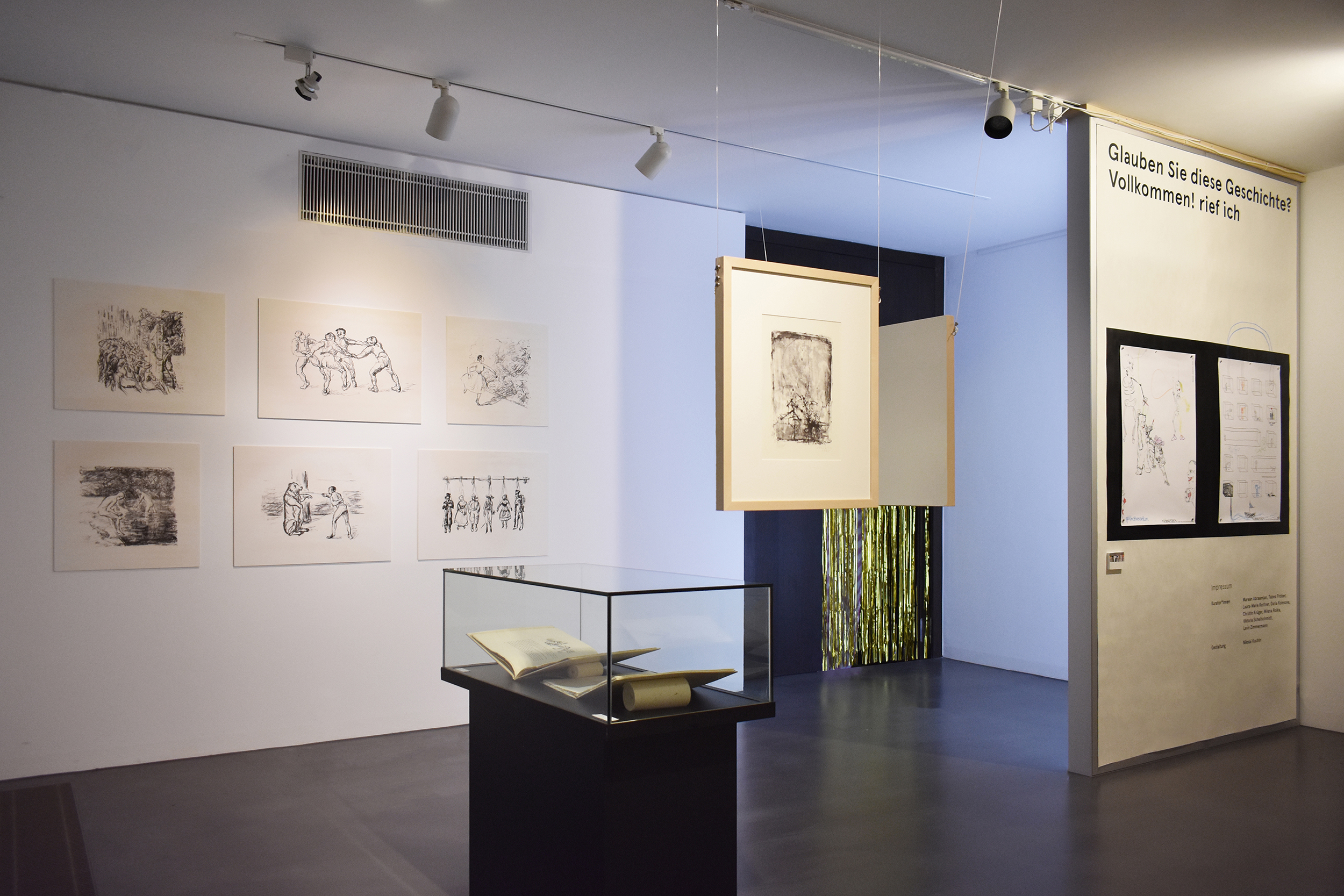
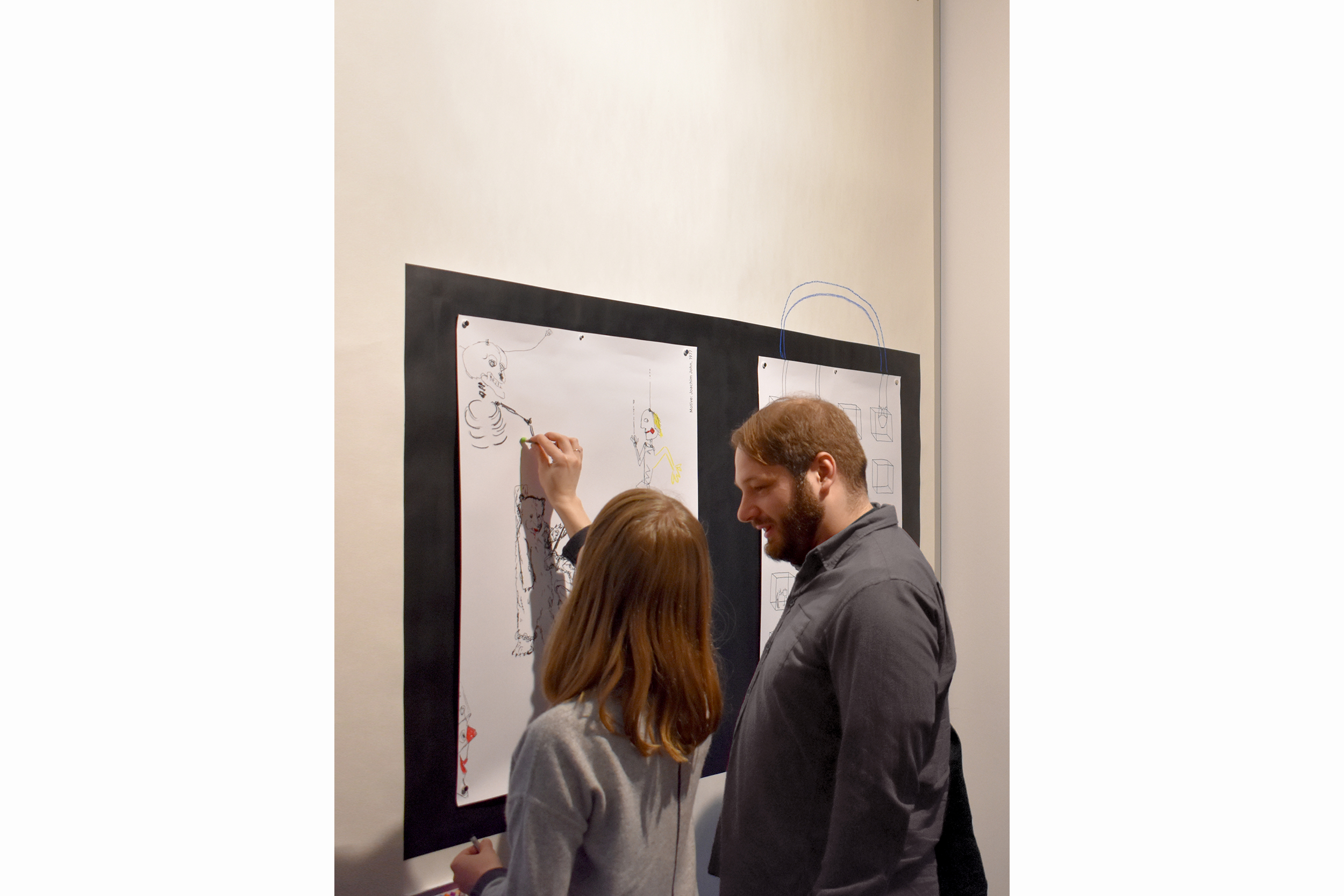
ÜBER DAS MARIONETTENTHEATER
(On the Marionette Theatre)
An exhibition devoted to Heinrich von Kleists text
Kleist-Museum, Frankfurt (Oder)
2020
Seldom has a text provoked so many questions and interpretations as ,Über das Marionettentheater’ by Heinrich von Kleist. The exhibition focuses on the dialogical structure of Kleist‘s text. In the first space, visitors are invited to walk through three interactive stations and through play contemplate the themes of Kleists text: absolute beauty, imperfection of a human, a possibility of paradise. A black band weaves through the stations and lists all the dialogical words that Kleist used in the text. Upon leaving, the visitor is confronted with a shed. In the viewing hole on its side there is a vision of a paradise, however as they enter it they walk through a staged kitschy darkroom of a night club. As Kleist would tell us, “paradise is locked and bolted”.
(On the Marionette Theatre)
An exhibition devoted to Heinrich von Kleists text
Kleist-Museum, Frankfurt (Oder)
2020
Seldom has a text provoked so many questions and interpretations as ,Über das Marionettentheater’ by Heinrich von Kleist. The exhibition focuses on the dialogical structure of Kleist‘s text. In the first space, visitors are invited to walk through three interactive stations and through play contemplate the themes of Kleists text: absolute beauty, imperfection of a human, a possibility of paradise. A black band weaves through the stations and lists all the dialogical words that Kleist used in the text. Upon leaving, the visitor is confronted with a shed. In the viewing hole on its side there is a vision of a paradise, however as they enter it they walk through a staged kitschy darkroom of a night club. As Kleist would tell us, “paradise is locked and bolted”.
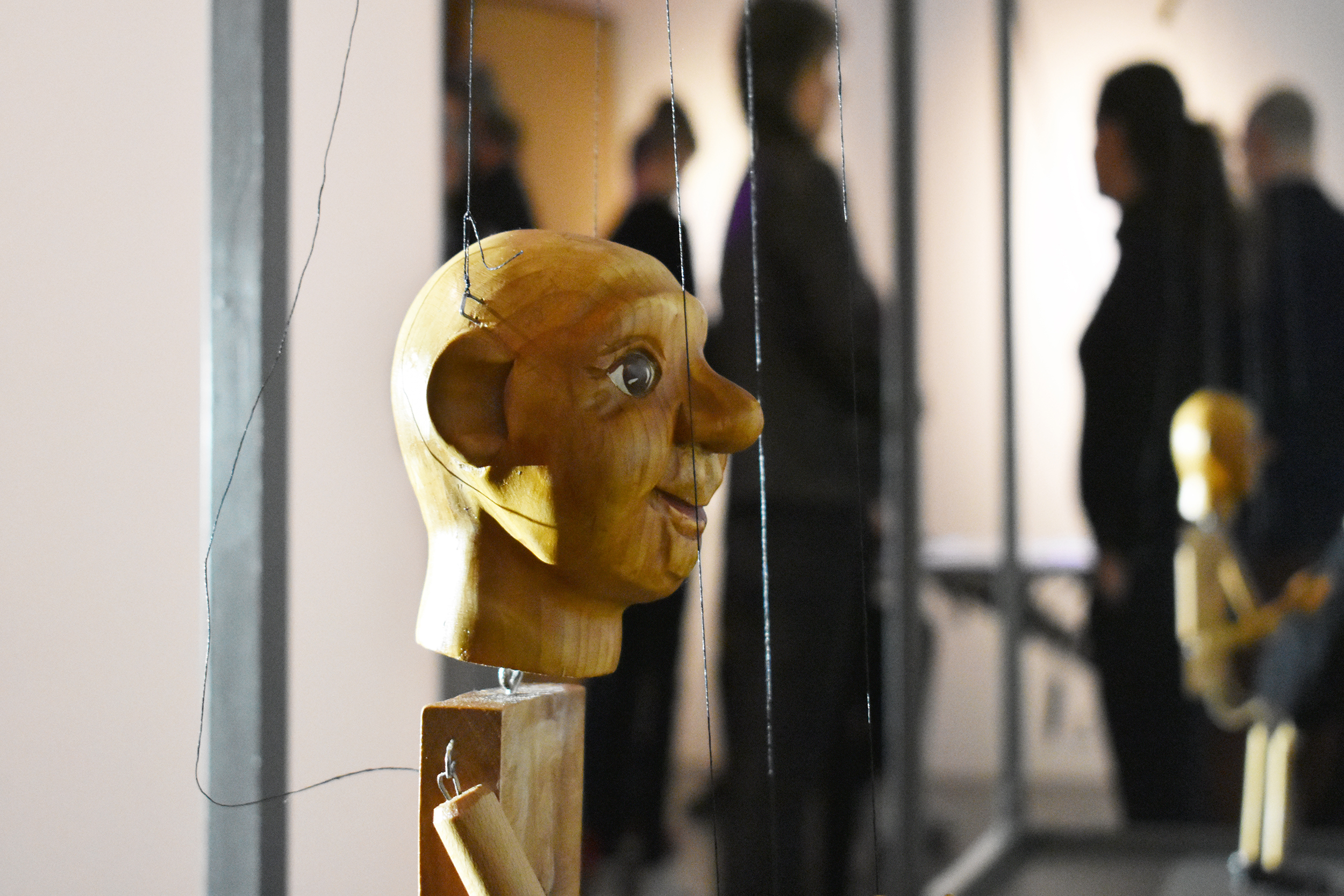 Exhibition curated by Dr. Barbara Gribnitz, Prof Dr. Anne Fleig and Department of German Studies at the Free University of Berlin
Exhibition curated by Dr. Barbara Gribnitz, Prof Dr. Anne Fleig and Department of German Studies at the Free University of BerlinTechnical Direction by Frank Käubler